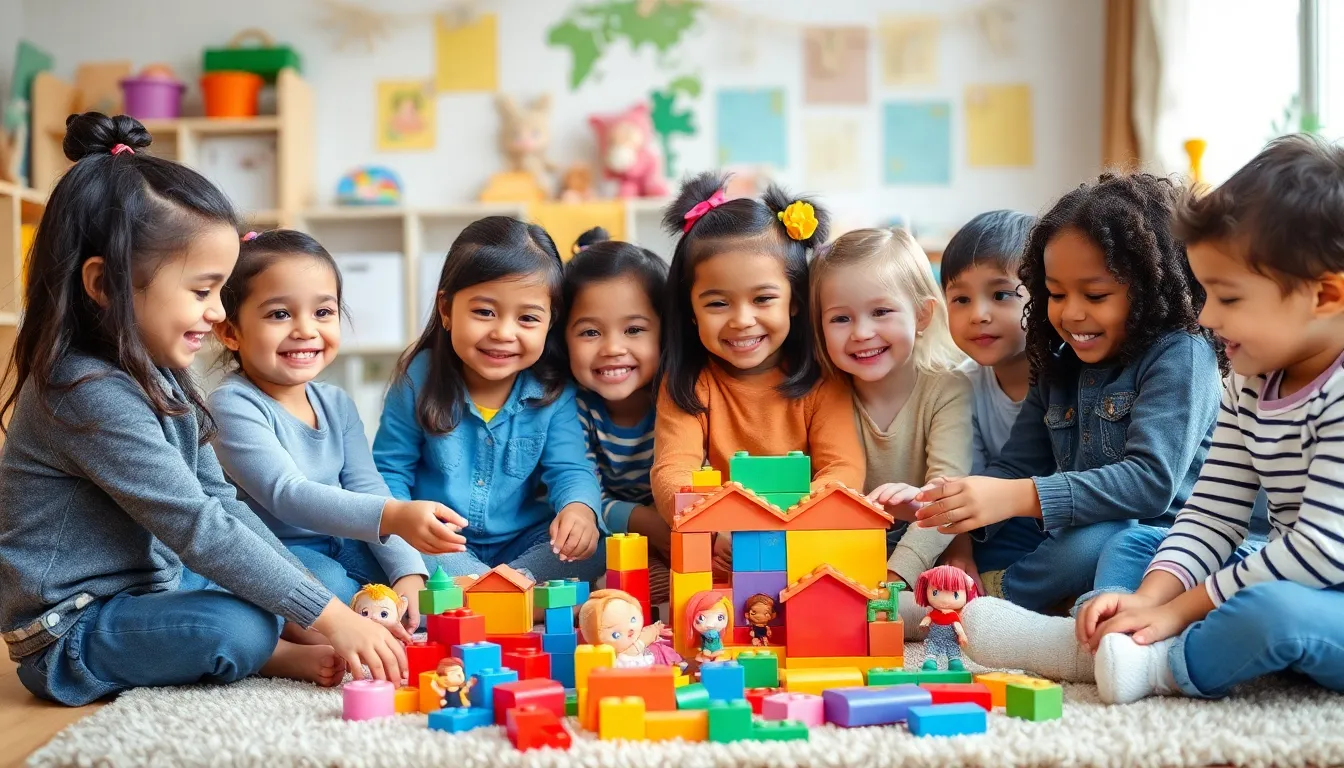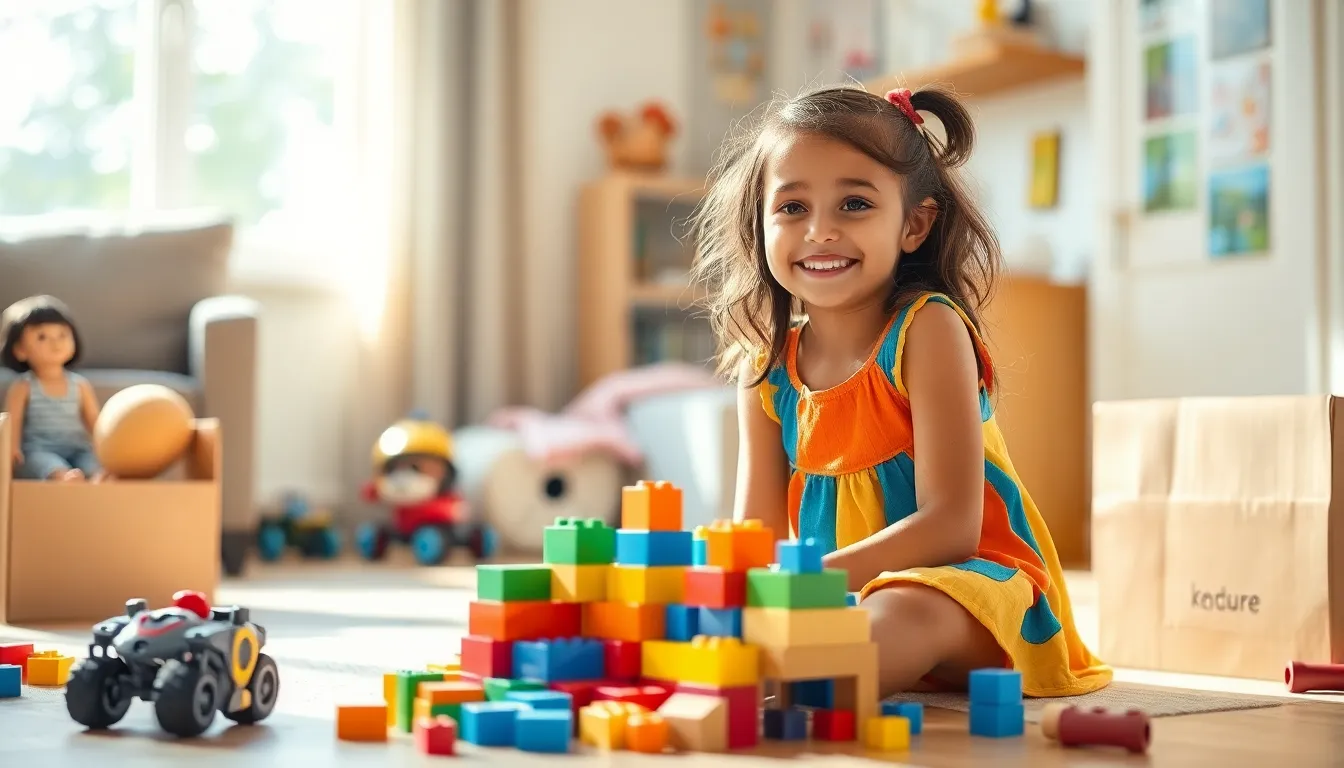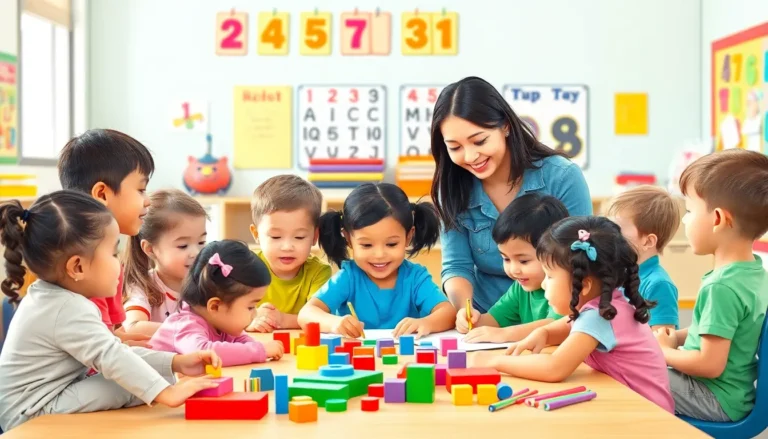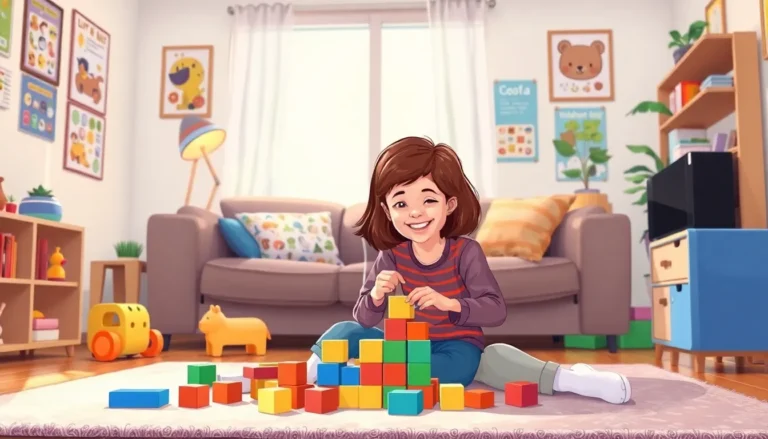Table of Contents
ToggleIn a world where screens dominate playtime, imaginative toys are the secret sauce for sparking creativity and adventure. These magical playthings transform mundane moments into epic quests, where a cardboard box becomes a spaceship and a simple doll morphs into a legendary hero. Who knew that a little imagination could turn the living room into a jungle or a castle?
What Are Imaginative Toys?
Imaginative toys are items designed to stimulate creativity and foster pretend play. These toys encourage children to explore different roles, scenarios, and narratives. Examples include building blocks, dolls, action figures, and craft kits, which allow for endless possibilities in storytelling and character development.
Pretend play serves as a fundamental part of childhood development. It enhances problem-solving skills and boosts emotional intelligence by enabling children to navigate various situations through role-playing. Additionally, imaginative toys support cognitive growth by sparking curiosity and exploration.
Kids often utilize everyday objects alongside traditional toys. A simple cardboard box can morph into a spaceship or a pirate ship, illustrating how imagination knows no bounds. Other common items like dress-up clothes and puppet sets expand the range of play options.
These toys create a unique environment for social interaction. Peer play becomes more meaningful when children collaborate to build a shared story or world. Through imaginative play, they develop communication skills and learn to negotiate roles within their group.
Noteworthy research highlights the connection between imaginative play and critical thinking. Children exposed to imaginative play demonstrate improved creativity in artistic and academic pursuits. Overall, imaginative toys not only entertain but also play an essential role in holistic development.
Benefits of Imaginative Play

Imaginative play offers numerous advantages that are crucial for a child’s development.
Cognitive Development
Through imaginative play, children enhance their cognitive skills. Engaging with toys like building blocks or dolls encourages problem-solving as they navigate different scenarios. Creativity flourishes when children invent stories or construct elaborate settings. This type of play promotes critical thinking, making connections between ideas and experiences. Additionally, research shows that interactive play increases memory retention. Kids learn to articulate thoughts by expressing themselves during pretend scenarios, aiding communication. Engaging in role-play helps in understanding others’ perspectives, enriching their cognitive experience. Overall, imaginative toys serve as a springboard for intellectual growth.
Social Skills
Social interaction significantly improves through imaginative play. When children collaborate to create make-believe worlds, they learn teamwork and negotiation. Sharing toys and ideas fosters empathy, allowing them to understand different viewpoints. Play often reflects group dynamics, where conflict resolution skills develop naturally. Children become more adept at verbal communication as they negotiate roles and craft stories together. Engaging in cooperative play also enhances emotional intelligence. Through these experiences, they build friendships and learn to express feelings appropriately. Interacting in a creative environment strengthens bonds with peers, creating lasting connections.
Types of Imaginative Toys
Imaginative toys come in various forms, each fostering creativity in unique ways.
Building Sets
Building sets include tools like blocks and bricks. Children construct structures, developing spatial awareness and engineering skills. These sets encourage problem-solving and critical thinking. As kids design their unique creations, they expand their imagination and learn about balance and stability. Popular options include LEGO and wooden block sets. Engaging with building sets allows for both individual and collaborative play.
Role Play Toys
Role play toys offer children the chance to step into different characters. These toys range from costumes to playsets representing various professions or fantasy worlds. Kids can pretend to be doctors, firefighters, or characters from their favorite shows. This type of play nurtures empathy and social skills. Engaging in role play helps children explore emotional scenarios and improves communication as they navigate social interactions.
Arts and Crafts
Arts and crafts provide materials for hands-on creativity. Supplies like paper, markers, and clay inspire children to create original works of art. Engaging in these activities enhances fine motor skills and self-expression. Kids learn to visualize their ideas and bring them to life through various mediums. Options include painting, drawing, and sculpting. Arts and crafts encourage both solo exploration and group projects.
Choosing the Right Imaginative Toys
Selecting imaginative toys involves considering factors that enhance creativity and ensure safety. Proper choices stimulate play and support growth, while age-appropriate options engage children effectively.
Age Appropriateness
Age-appropriate toys encourage development at various stages of childhood. Younger children benefit from simple toys, like soft dolls or large building blocks, that promote exploration and basic motor skills. As children grow, they enjoy more complex toys, such as intricate arts and crafts sets or advanced construction kits, which challenge cognitive abilities. Preschoolers thrive on role play toys, allowing them to mimic everyday scenarios and enhance their social skills. Parents should assess developmental milestones and choose toys that align with their child’s interests and abilities to ensure engaging playtime.
Safety Standards
Safety standards significantly influence toy selection. Toys should carry safety certifications, such as ASTM or EN71, indicating compliance with safety regulations. Non-toxic materials are crucial for toys, especially those intended for young children who may put items in their mouths. Choking hazards often arise from small parts, making it essential to select toys designed for the appropriate age group. Parents should regularly inspect toys for wear and tear, ensuring components remain intact. Incorporating these safety considerations leads to enjoyable and secure imaginative play experiences for children.
Imaginative toys are more than just playthings; they’re essential tools for childhood development. By encouraging creativity and exploration, these toys help children build critical skills that last a lifetime. Engaging in pretend play fosters social interaction and emotional intelligence, allowing kids to navigate their feelings and relationships effectively.
Selecting the right imaginative toys is crucial for maximizing their benefits. Parents should prioritize age-appropriate options that inspire curiosity and ensure safety. With the right choices, imaginative play can transform everyday moments into extraordinary adventures, enriching children’s lives and nurturing their growth. Embracing imaginative toys is a step toward fostering a generation of creative thinkers and empathetic individuals.





